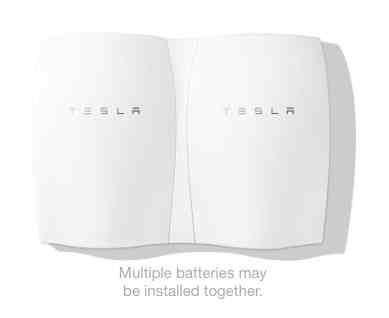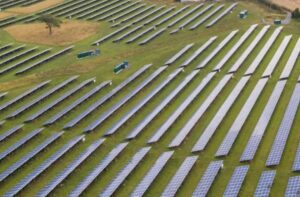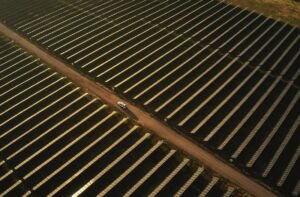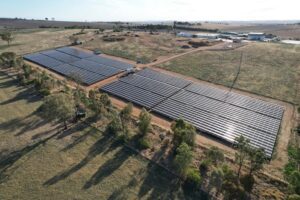Elon Musk has created one of the world’s most valuable motor companies by doubling the price of electric vehicles and wowing consumers with a high-performance, luxury electric vehicle.
Now he wants to use that cachet to enter the mass market – in home energy systems with solar and storage. While the impact of the Tesla Model S on the global motor industry was considered to be something of a slow burn, the impact of Tesla Energy’s battery storage system, the PowerWall. is likely to be dramatic.
It changes everything. In one fell swoop, Tesla has cut the cost of stationary battery storage by more than half, delivering disruption to the doorsteps of incumbent utilities and fossil fuel generators that most did not imagine would emerge for at least another decade.
Deutsche Bank says the Tesla lithium-ion battery pricing ($US3,500 for a 10kWh system) translates – after inverter costs and installation – to a price of $US500/kWh, less than half the industry wide costs of $US1,000-$US1,250/kWh. (See full pricing here and our other stories: Did Tesla just kill nuclear power, and Tesla just put a bomb under business model of the grid.)
What it means for the consumer – and conventional energy providers – is that the combination of rooftop solar and lithium ion battery storage is now cheaper than the grid – particularly in places with high electricity costs and good sun, and that means countries like Australia.
According to Deutche Bank, the Tesla pricing translates into delivered energy at a cost of US6-8c/kWh to a solar system. That means the combined cost of a solar array with battery storage is now in the high teens or low 20s c/kwh.
“This implies that solar + batteries are already competitive in high priced areas like Hawaii,” Deutsche Bank said, adding that further cost reductions can be expected in coming years as production shifts to the new “gigafactory” in Nevada.
It’s a moot point about how quickly this will take off in the US, where the rate of rooftop solar is growing, but still relatively low penetration.
But it has huge implications for Australia, which because of its high retail electricity costs (around 30c/kWh and higher in time of use areas), excellent solar resource, and huge penetration of rooftop solar (one in four houses in some states) finds itself at the cutting edge of this revolution.
In late 2013, the CSIRO predicted that battery storage could be economic in the mass market around 2040. Last year, AGL suggested it might be 2030. UBS suggested going completely off grid might be economic in 2018. Now, it seems, battery storage, is likely to be competitive for the average household in 2016, when the first Tesla battery systems are delivered in Australia.
Little wonder then, that AGL – which last month said it would phase out coal fired generation by 2050 – on Friday announced it would fast track its battery storage offering to consumers. Utilities are now realising that they need to act quickly to stay relevant in rapidly changing markets.
 Analysts say that even with the foreign exchange and shipping costs, and the inverter and installation costs, the Tesla technology is a step change for Australia. The addition of battery storage to solar arrays in Australia could significantly reduce consumption from the grid, and offer relatively quick pay back times.
Analysts say that even with the foreign exchange and shipping costs, and the inverter and installation costs, the Tesla technology is a step change for Australia. The addition of battery storage to solar arrays in Australia could significantly reduce consumption from the grid, and offer relatively quick pay back times.
This has huge implications for retailers, generators and network operators. Accelerating the entry of battery storage at one end of the business surely means accelerating the exit of coal fired generation at the other end.
One analyst, crunching some numbers for RenewEconomy, says adding battery storage to a solar array could mean that the amount could be reduced to less than 2kWh a day – from an average of around 12kWh for non solar houses. Payback times are less than 10 years.
The addition of battery storage is likely to be very attractive to solar households paid little for exports (and particularly nearly 150,000 solar households in NSW that will lose premium tariffs next year), and those who want to avoid blackouts (nearly 200,000 homes lost power in the storms last month, many for more than a week).
The Tesla battery storage array is unlikely to shift homes off-grid, but it could give them a large degree of independence, and the ability to operate basic appliances when the power does go.
The warning from Deutsche Bank was clear: “Utilities that attempt to aggressively counter DG (distributed generation) rooftop solar could be priced out of the market,” its analysts warned.
That’s because these cost reductions are only the beginning. When production begins at Tesla’s Gigafactory in Nevada, being built with Panasonic, battery storage costs are likely to fall by half again.
Steve Blume, the head of the Australian Energy Storage Council, says if Tesla can deliver on these prices, it will be a massively disruptive initiative.
Blume says it will force other battery suppliers to compete at around the same price, and will force the rapid change at network level that has not been apparent to date.
“(It will) put a bomb under the need to transform our unidirectional dumb grids into multi-directional multi-generation type smart grids ASAP,” Blume writes.
There has been huge frustration in the industry about the slow pace of policy change. The recent network price ruling for NSW and Queensland – which sets the revenue levels out to 2019 – virtually ignored solar and storage, yet there is no technology that will have as big an impact.
The incremental savings being offered by reduced spending on poles and wires simply won’t match the savings being offered by new delivery systems, and the ability of households and businesses to generate their own energy, store it, and even share it with neighbours and others.
“The existing network players will simply be unable to manage the commodification of solar and storage at this level,” Blume writes.
“The customer demand will fly far ahead of the cumbersome and glacial pace of change that we have seen so far. That is so in the US and more so in Australia.”
The biggest impact, however, may be on the coal fired generators. Pushing out fossil fuel generators, coal in particular – is Musk’s stated intention (along with making money).
He says he wants to change not just the transport market, but the whole energy system. “It is something we can do,” Musk said at the announcement. “And that is the future we need to have.”
Some utilities already recognise this. The biggest in Europe and the US are either jettisoning their centralised fossil fuel generators, or at least recognising their age of dominance is coming to an end, and focusing their efforts on solar, storage, electric vehicles and micro-grids.
Their future depends on their ability to compete with the likes of Tesla and its sister company Solar City, or forge partnerships with them. The likes of AGL Energy and others in Australia may need to follow. Indeed, there is some talk in Australia that this is in train.
Others say Tesla will not have it it’s own way. They point to newer battery technologies are currently being released such as LG’s lithium-ion Polymer batteries with higher cycle life and depth of discharge rates at similar price points. Others point to Austalia’s Redflow, which is delivering household models of its zinc bromide battery that some say is more suitable to household consumption patters. There are numerous other emerging competitors.
But the main point is that battery storage is coming down quickly. “One thing is certain, the world of home energy storage is upon us and affordable!” said one.










